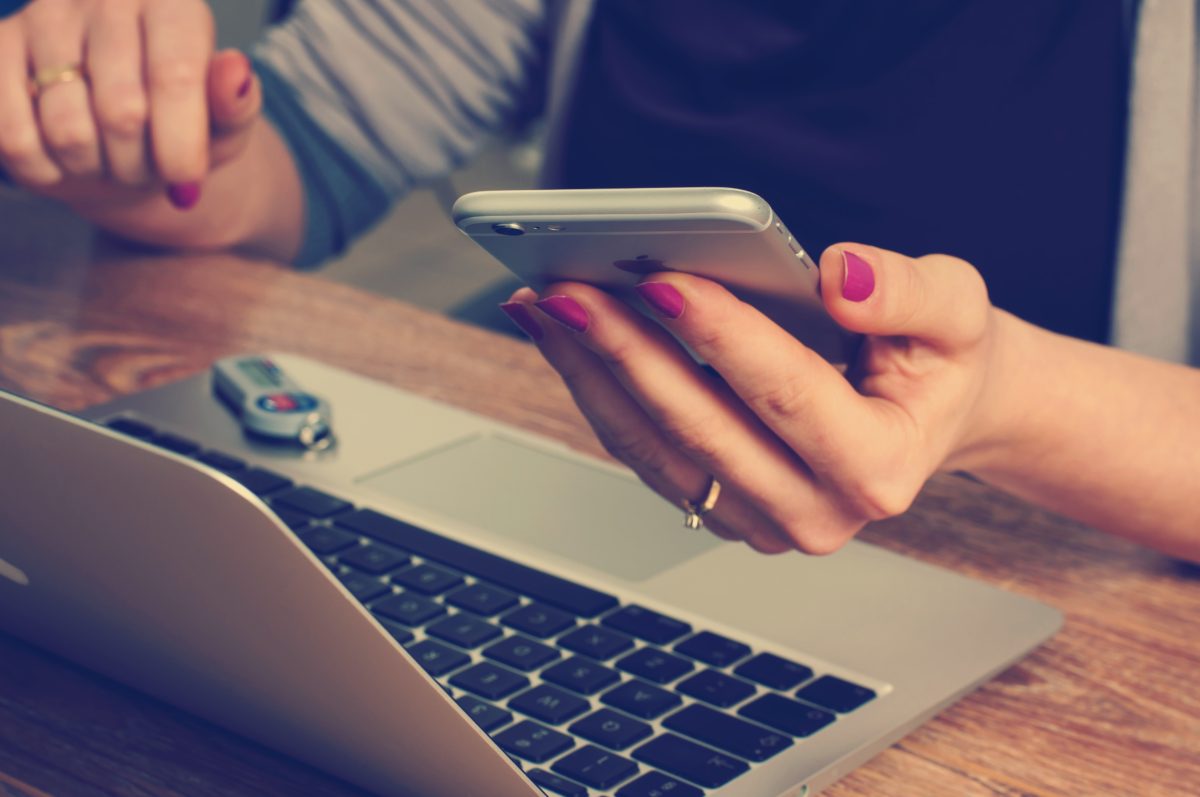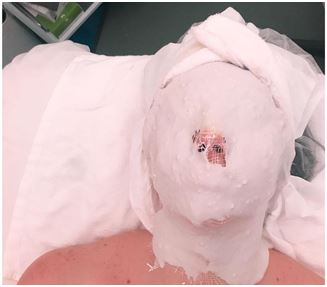Could This Digital Detox Facial Undo Damage from Blue Light?

You’ve heard about the impact of blue light on your eyes and brain. But have you heard about what it can do to your skin? There’s a new trend called the Digital Detox Facial that many are trying – but is it worth it? Here’s what we’ve found.
The Impact of Blue Light
Most of us are using a device that emits blue light throughout the day, with studies suggesting that 60% of people spend more than 6 hours a day in front of a digital device.
According to BlueLightExposed.com, blue light waves are among the shortest, highest energy wavelengths, causing flickers that create a glare that have been shown to reduce visual contrast and affect sharpness and clarity. “This flickering and glaring may be one of the reasons for eyestrain, headaches, physical and mental fatigue caused by any hours sitting in front of a computer screen or other electronic device.” LED black-light technology – including TVs, computers, laptops, smart phones and tablets – help enhance screen brightness and clarify, emitting very strong blue light waves.
In an interview with Well&Good, Oculoplastic surgeon, Maryam Zamani, MD, expressed her belief that blue light can contribute to pigmentation, premature aging, and other skin woes.
A new study from the Division of Sleep and Circadian Disorders at Brigham and Women’s Hospital in Boston has found that the blue light exerted by your phone and tablet may do more than take away precious hours of sleep – it may increase your risk of harmful diseases and conditions. A problem, Charles Czeisler, PhD, MD, and the Chief of the division says is a “looming public health crisis.”
The Trending Digital Detox Facial

Many spas are offering facials that are promoted to undo all of the damage that technology can cause for your complexion, including touch therapy methods that the spas claim can stimulate and loosen the muscles in the jaw, neck, and shoulders.
The facial involves a creamy cleanser followed by a hydrating serum and a rubber mask that sits on the skin for about 20 minutes. Then, technicians press on acupressure points that correspond with facial tension. Rachel Lapidos, writer for Well+Good, tried out the digital detox facial and wrote, “Yes, my complexion looked nice and glowy afterwards, but the biggest perk of all was having someone else massage out the knots in my face that build up from my technology use. Lesson learned: Put your phone down and you skin will be happier.”
So, the best thing to do for a digital detox is putting your phone down for 20 minutes every hour or stepping away from your computer for a break.
What to do
There are a few things you can do to protect your vision against these harmful blue light rays.
- Reduce the glare of your device by reducing its brightness. If you are on the computer for long periods of the day, you may want to invest in a glare reduction filter for your screen.
- Increasing the text size on your devices may help to protect against eye strain.
- Take a break every 20 minutes for your device!
- Limiting your screen time is the most effective.
Natural Support for Eye Health
In our retina, an essential region for crystal clear vision, the concentration of two carotenoids – Lutein and Zeaxanthin (abbreviated L + Z) – are essential for ongoing vision health. They are so important to vision that they are commonly referred to as macular pigments. The macula is a filter that helps protect the eye.†
Healthy, robust macular tissue, rich in L + Z, has key functions, including filtering out blue light and focusing on objects for our sharpest vision (such as in reading a newspaper). If it penetrates deep into our eyes, it damages the many small organs in our retina that are required for vision. Having a thicker macular tissue shields from blue light and this robustness is largely due to its L + Z content.†